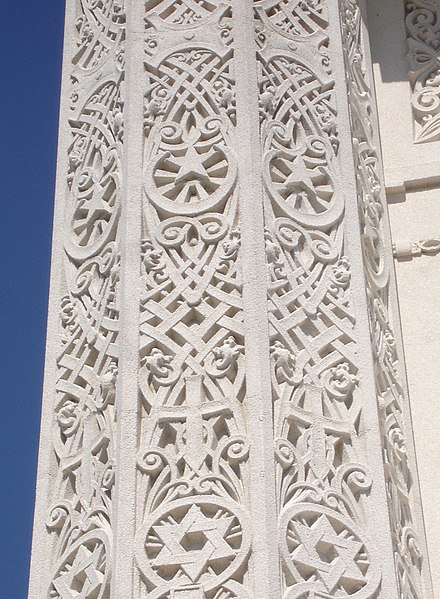Attempted schisms in the Baháʼí Faith
The Baháʼí Faith was formed in the late 19th-century Middle East by Baháʼu'lláh, and teaches that an official line of succession of leadership is part of a divine covenant that assures unity and prevents schism. There are no major schisms in the Baháʼí Faith, and attempts to form alternative leadership have either become extinct with time or have remained in extremely small numbers that are shunned by the majority. The largest extant sect is related to Mason Remey's claim to leadership in 1960, which has continued with two or three groups numbering at most 200 collectively, mostly in the United States.
Shoghi Effendi at the time of becoming Guardian in 1921. Taken in Haifa.
The Universal House of Justice was first elected in 1963. Its seat (pictured) was constructed in 1982.
Early Western Baháʼí pilgrims. Charles Mason Remey is standing on the left.
The Baháʼí Faith is a religion founded in the 19th century that teaches the essential worth of all religions and the unity of all people. Established by Baháʼu'lláh, it initially developed in Iran and parts of the Middle East, where it has faced ongoing persecution since its inception. The religion is estimated to have 5 to 8 million adherents, known as Baháʼís, spread throughout most of the world's countries and territories.
Seat of the Universal House of Justice, governing body of the Baháʼís, in Haifa, Israel
Baháʼí House of Worship in Ingleside, Sydney, Australia
Symbols of many religions on a pillar of the Baháʼí House of Worship in Wilmette, Illinois, U.S.
The Baháʼí gardens in Haifa, Israel







